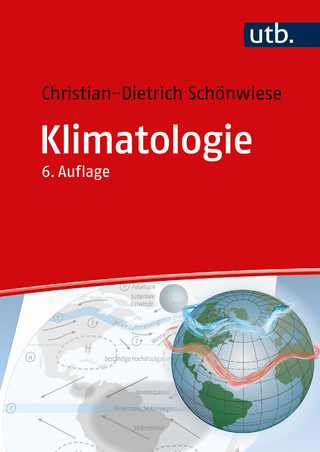
The impact of urban expansion on land surface temperatures in Sulaymaniyah City
Seiten
2015
|
15001 A. 1. Auflage
GRIN Verlag
978-3-668-11246-9 (ISBN)
GRIN Verlag
978-3-668-11246-9 (ISBN)
- Titel nicht im Sortiment
- Artikel merken
Master's Thesis from the year 2013 in the subject Geography / Earth Science - Cartography, Geographic Information Science and Geodesy, Sheffield Hallam University, language: English, abstract: This research examines the changes in land use/land cover in the city of Sulaymaniyah north of Iraq and identifies land surface temperature variations among the land cover types. The primary aim of this study is to use Landsat-5 TM imagery with GIS techniques to study and investigate the impact of urban expansion on land surface temperature (LST) for three year periods. Three Landsat 5 TM images were obtained in July 1984, August 2000 and October 2010. Land use categories were derived through the use of supervised classification techniques and the land surface temperature was obtained by computing the brightness temperature from the satellite sensor.
The result showed that between 1984 and 2010, there was a mild decrease in open and barren lands from 69.3% in 1984 to 57.2% in 2010 while the built-up areas increased from 11.5% in 1984 to 15.5% in 2000 and reached 25.5% by 2010.The political and economic changes in the study area are the main factors behind the recent urban expansion. The lowest LST readings were taken from the vegetation lands with values of 28oC in 1984, 29oC in 2000 and 34oC in 2010. The barren lands recorded the highest temperature of 38oC, 38oC and 34oC for the years 1984, 2000 and 2010 respectively. An interesting observation in this study is the fact that the urban areas where found to be cooler than its surroundings zones. This is revealed by the LST analysis conducted, with the recent increase in green spaces in the city playing a major role in cooling the temperature there. In relating NDVI to LST, the study found a strong negative correlation between them having derived correlation values of the values of (-0.70), (-0.69) and (-0.73) for 1984, 2000 and 2010 respectively. Conclusively, remote sensing and GIS proved to be very effective in studying and monitoring the relationship between urban growth and surface temperature. Recommendations were made to encourage the expansion of urban surfaces into the surrounding areas, especially barren lands, in order to cool those areas.
The result showed that between 1984 and 2010, there was a mild decrease in open and barren lands from 69.3% in 1984 to 57.2% in 2010 while the built-up areas increased from 11.5% in 1984 to 15.5% in 2000 and reached 25.5% by 2010.The political and economic changes in the study area are the main factors behind the recent urban expansion. The lowest LST readings were taken from the vegetation lands with values of 28oC in 1984, 29oC in 2000 and 34oC in 2010. The barren lands recorded the highest temperature of 38oC, 38oC and 34oC for the years 1984, 2000 and 2010 respectively. An interesting observation in this study is the fact that the urban areas where found to be cooler than its surroundings zones. This is revealed by the LST analysis conducted, with the recent increase in green spaces in the city playing a major role in cooling the temperature there. In relating NDVI to LST, the study found a strong negative correlation between them having derived correlation values of the values of (-0.70), (-0.69) and (-0.73) for 1984, 2000 and 2010 respectively. Conclusively, remote sensing and GIS proved to be very effective in studying and monitoring the relationship between urban growth and surface temperature. Recommendations were made to encourage the expansion of urban surfaces into the surrounding areas, especially barren lands, in order to cool those areas.
| Erscheinungsdatum | 08.10.2016 |
|---|---|
| Sprache | englisch |
| Maße | 148 x 210 mm |
| Gewicht | 139 g |
| Themenwelt | Naturwissenschaften ► Geowissenschaften ► Allgemeines / Lexika |
| Schlagworte | Geowissenschaften • Geowissenschaften / Erdwissenschaften • GIS techniques • GIStechniques • Land cover • Landcover • landsurfacetemperature • Land Surface Temperature • land use • Landuse • temperature variation • temperaturevariation |
| ISBN-10 | 3-668-11246-0 / 3668112460 |
| ISBN-13 | 978-3-668-11246-9 / 9783668112469 |
| Zustand | Neuware |
| Haben Sie eine Frage zum Produkt? |
Mehr entdecken
aus dem Bereich
aus dem Bereich
Physische Geographie und Humangeographie
Buch | Hardcover (2020)
Springer (Verlag)
CHF 153,95


